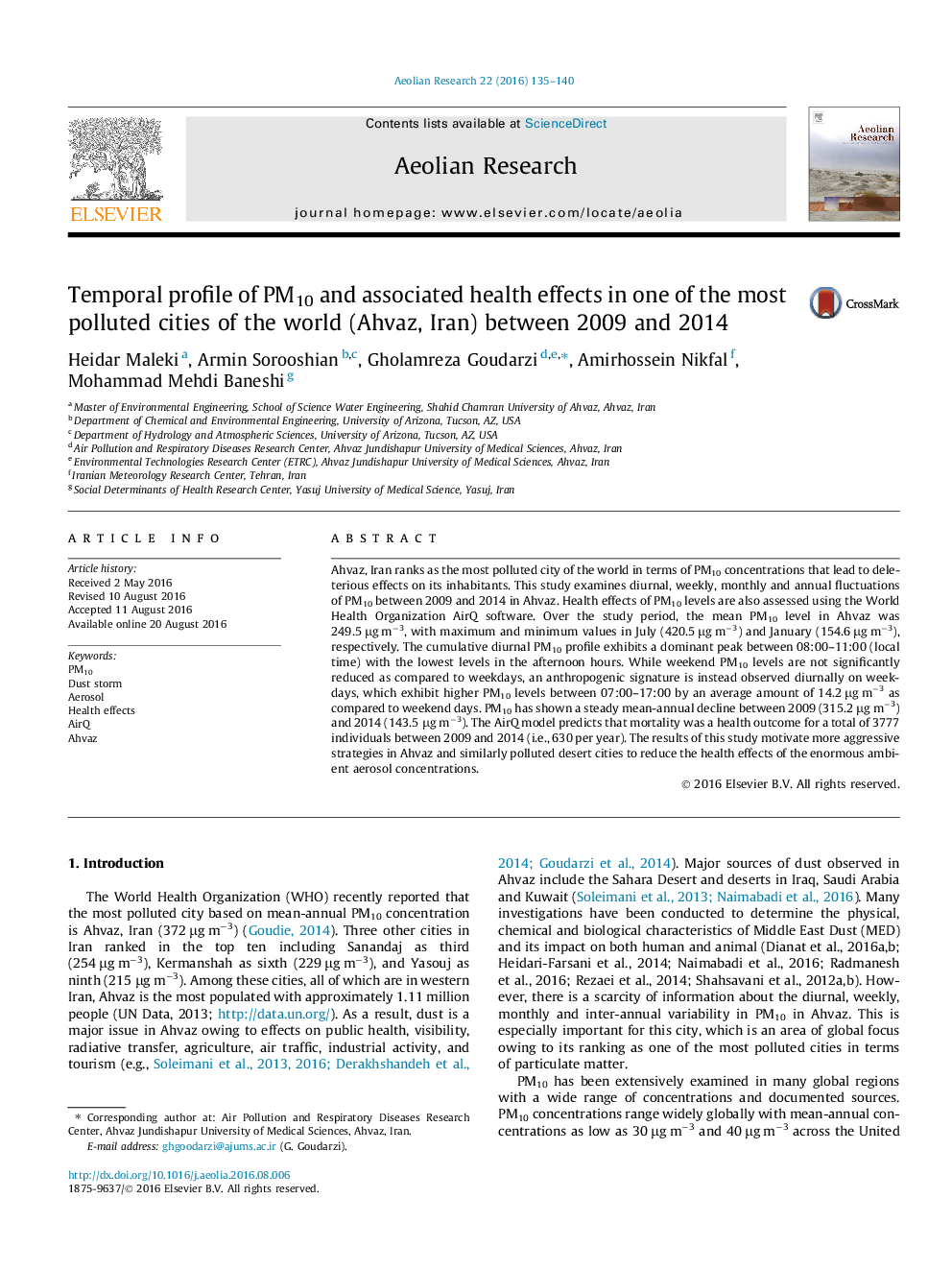| کد مقاله | کد نشریه | سال انتشار | مقاله انگلیسی | نسخه تمام متن |
|---|---|---|---|---|
| 6426238 | 1634106 | 2016 | 6 صفحه PDF | دانلود رایگان |

- Temporally-resolved PM10 data analyzed for Ahvaz, Iran.
- Summers and early morning hours have highest PM10.
- PM10 higher between 07:00 and 17:00 during weekdays.
- PM10 levels have decreased steadily between 2009 and 2014.
- AirQ health outcome model calculations are reported.
Ahvaz, Iran ranks as the most polluted city of the world in terms of PM10 concentrations that lead to deleterious effects on its inhabitants. This study examines diurnal, weekly, monthly and annual fluctuations of PM10 between 2009 and 2014 in Ahvaz. Health effects of PM10 levels are also assessed using the World Health Organization AirQ software. Over the study period, the mean PM10 level in Ahvaz was 249.5 μg mâ3, with maximum and minimum values in July (420.5 μg mâ3) and January (154.6 μg mâ3), respectively. The cumulative diurnal PM10 profile exhibits a dominant peak between 08:00-11:00 (local time) with the lowest levels in the afternoon hours. While weekend PM10 levels are not significantly reduced as compared to weekdays, an anthropogenic signature is instead observed diurnally on weekdays, which exhibit higher PM10 levels between 07:00-17:00 by an average amount of 14.2 μg mâ3 as compared to weekend days. PM10 has shown a steady mean-annual decline between 2009 (315.2 μg mâ3) and 2014 (143.5 μg mâ3). The AirQ model predicts that mortality was a health outcome for a total of 3777 individuals between 2009 and 2014 (i.e., 630 per year). The results of this study motivate more aggressive strategies in Ahvaz and similarly polluted desert cities to reduce the health effects of the enormous ambient aerosol concentrations.
Journal: Aeolian Research - Volume 22, September 2016, Pages 135-140